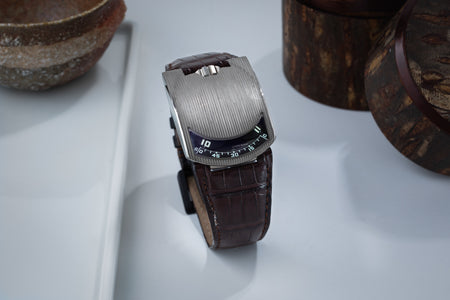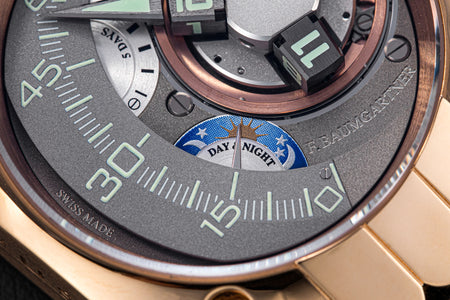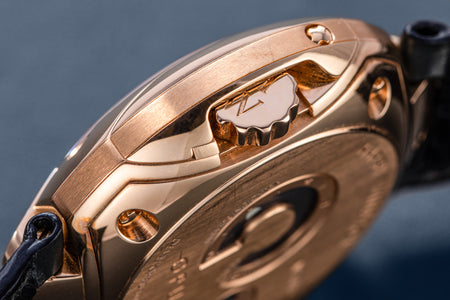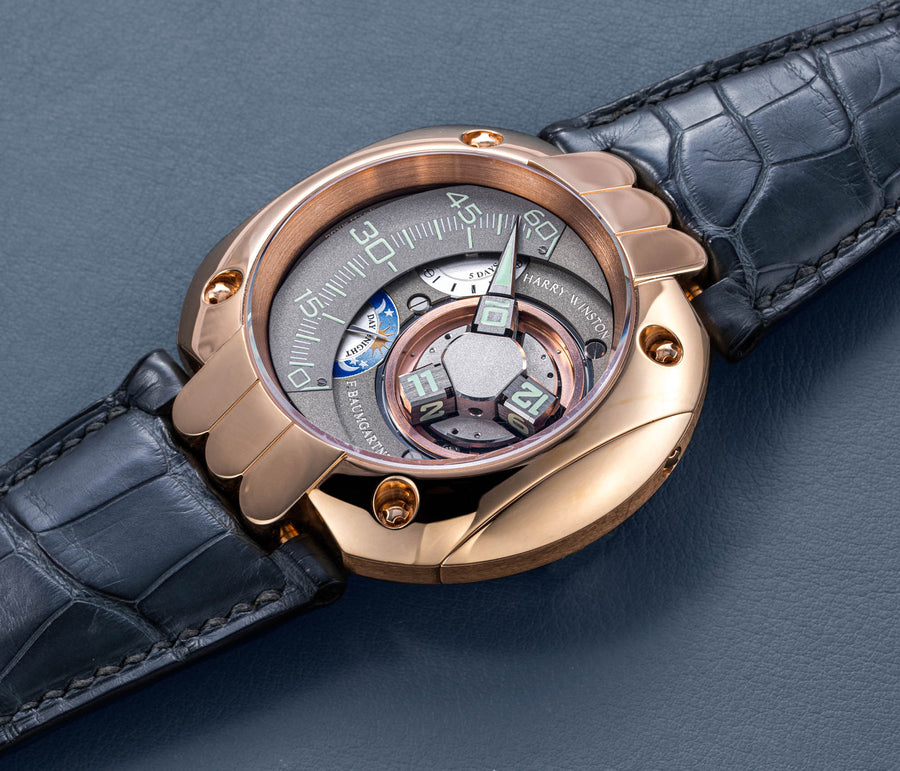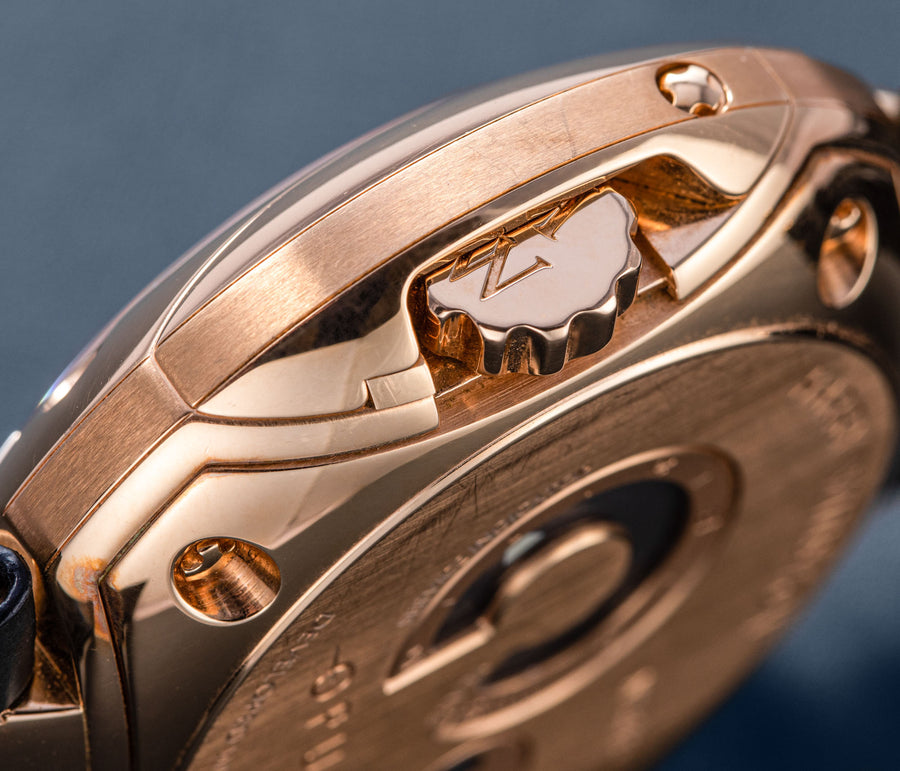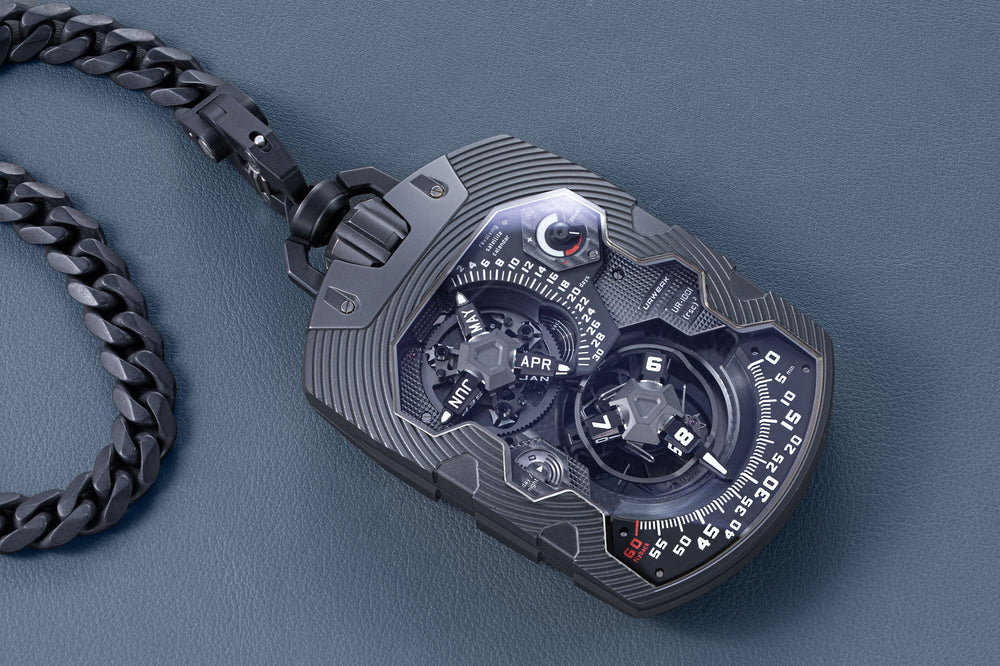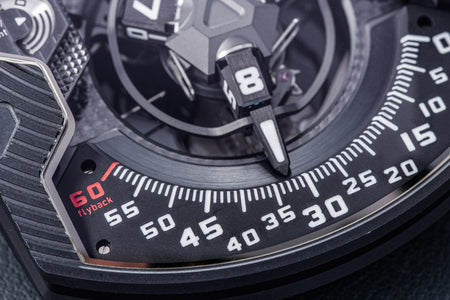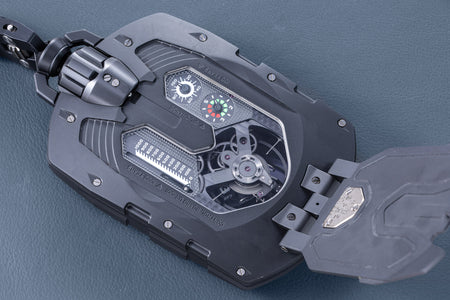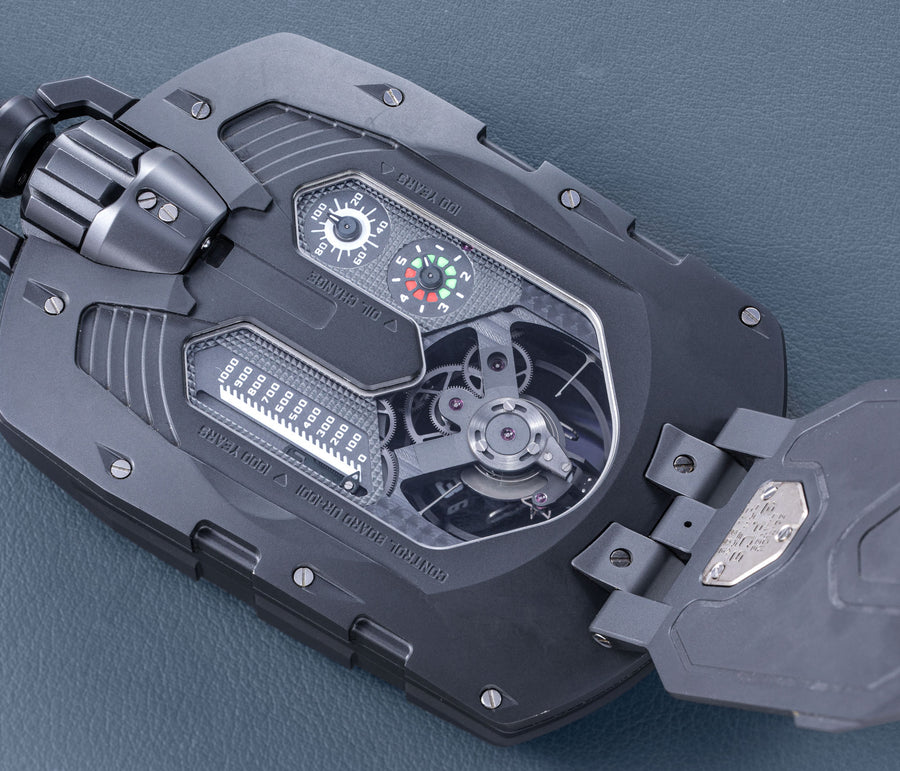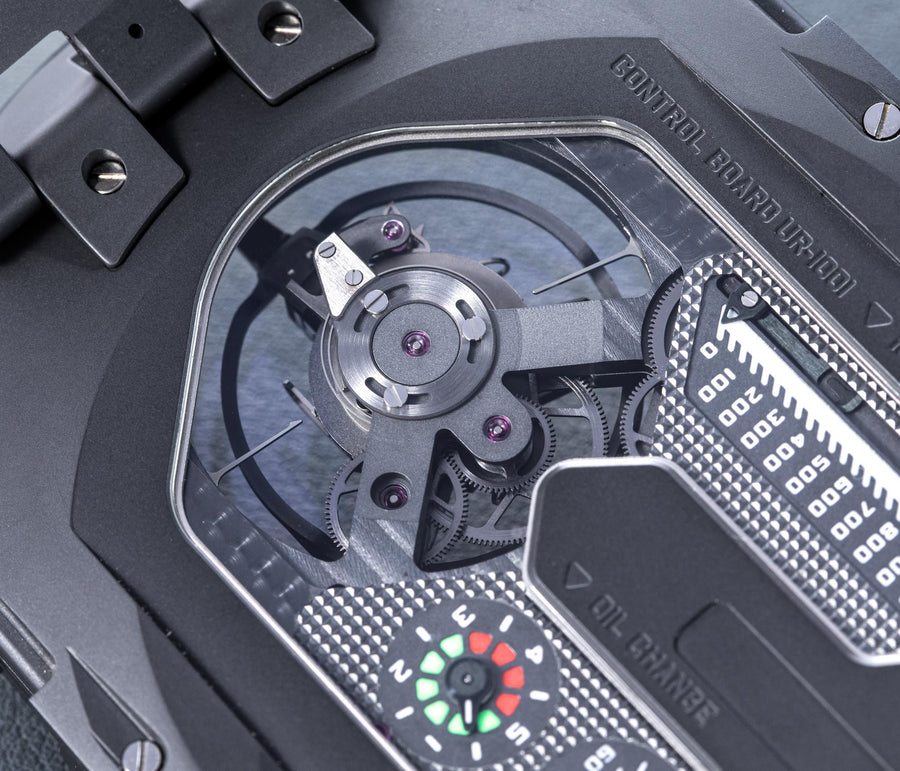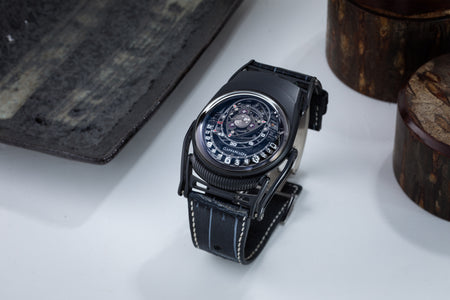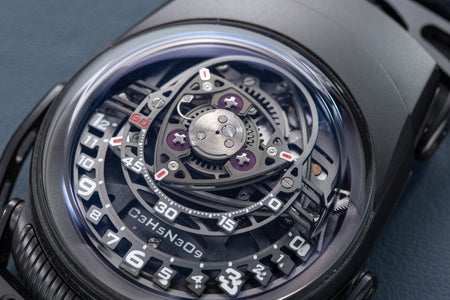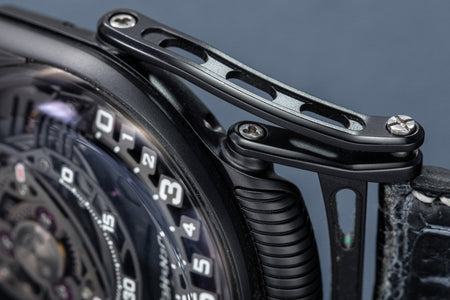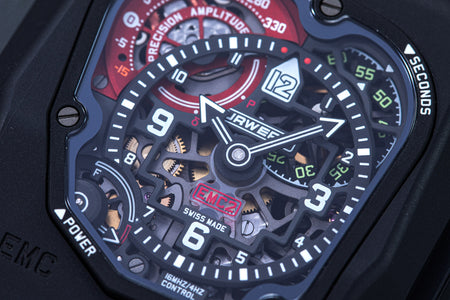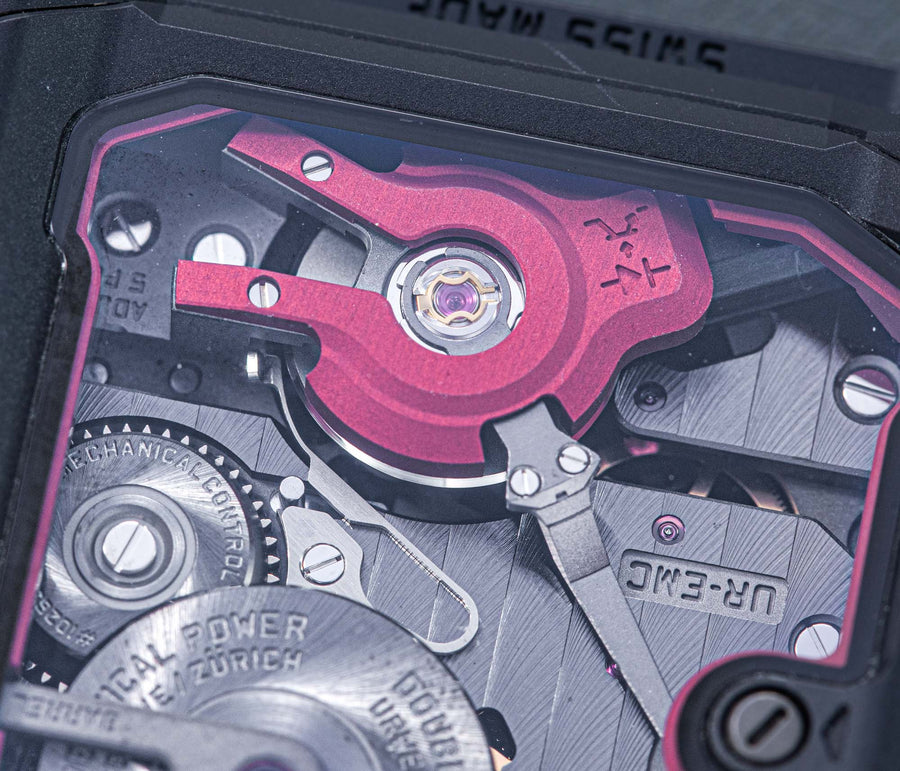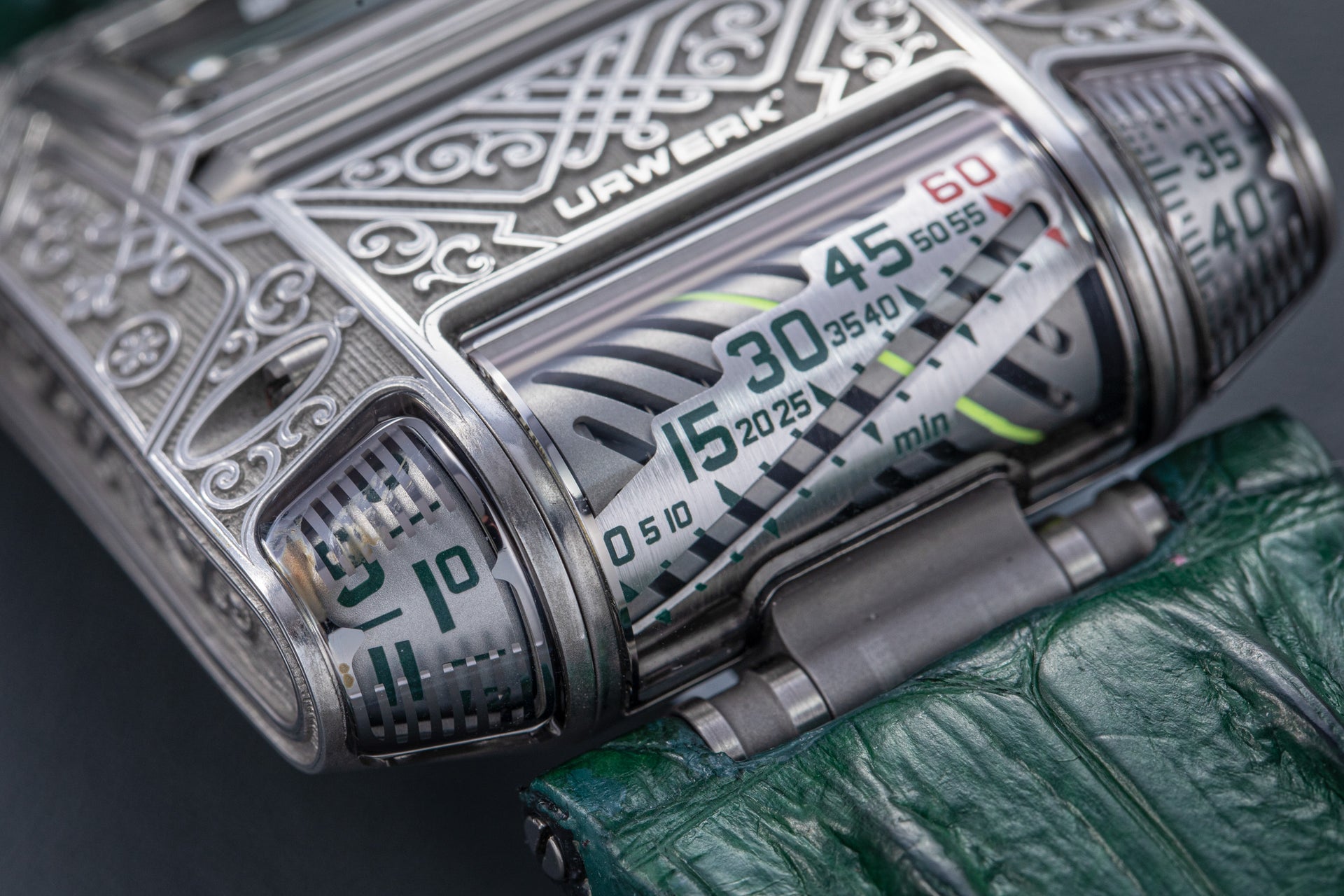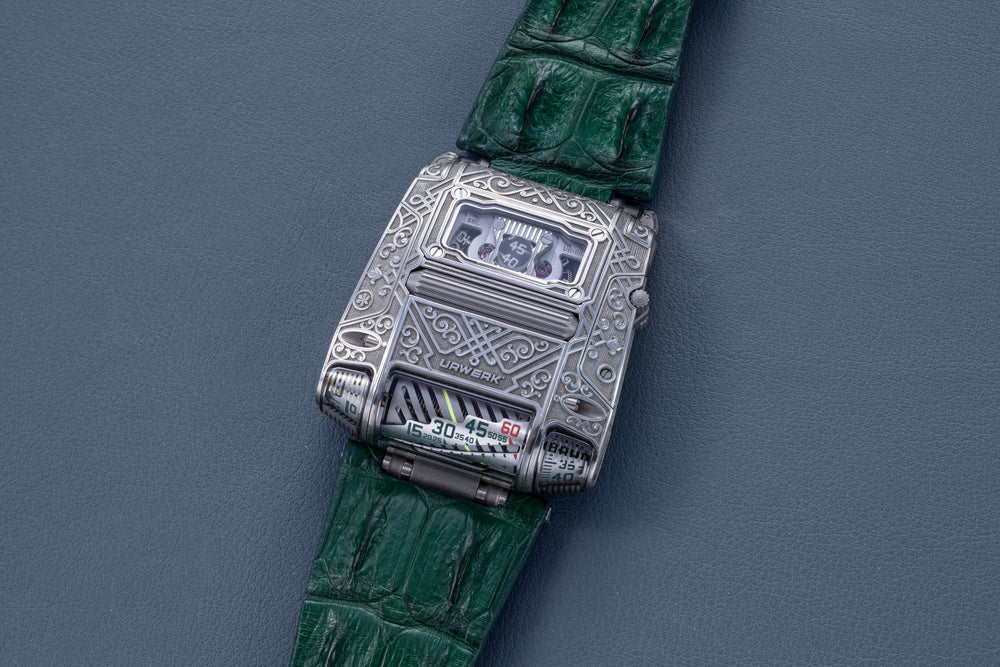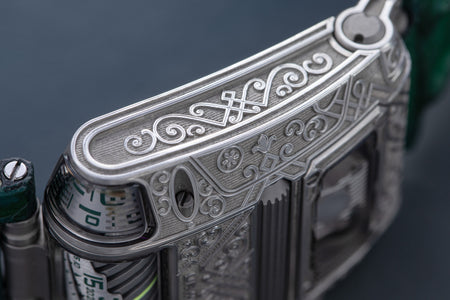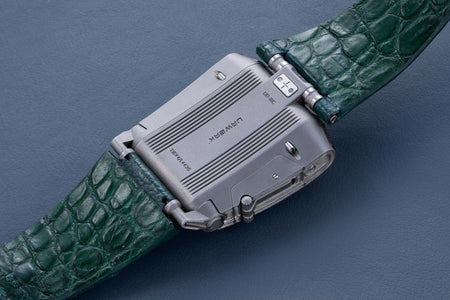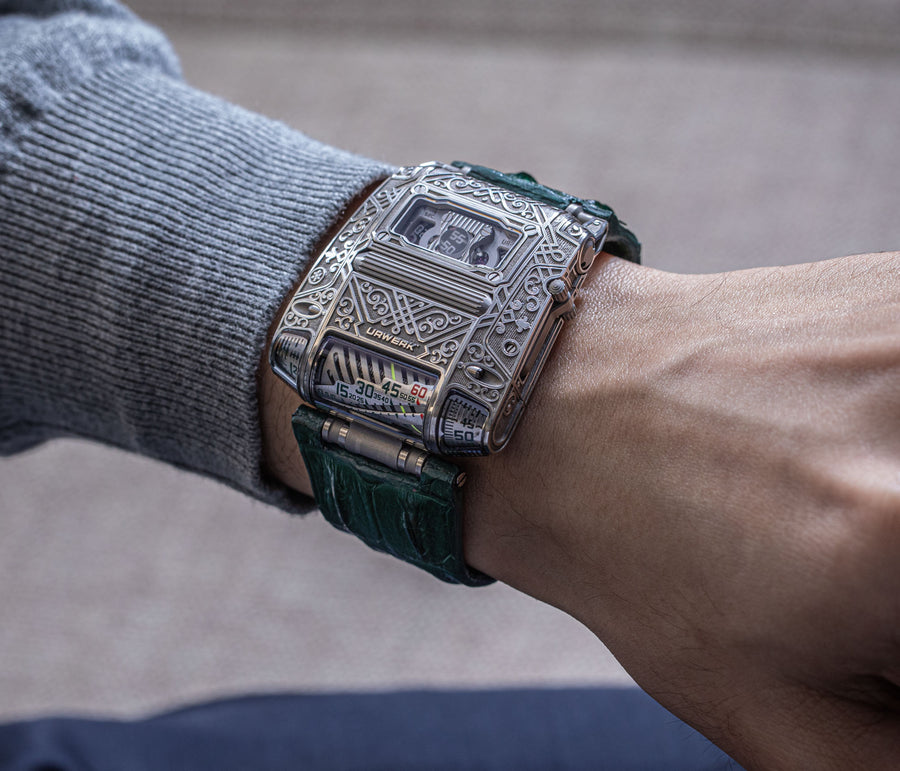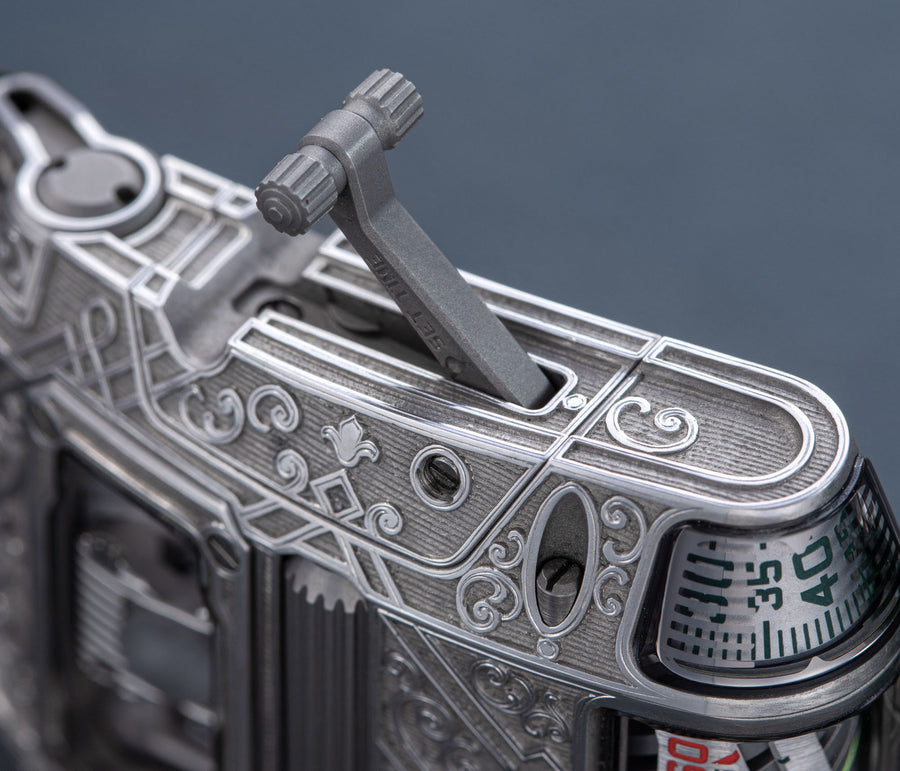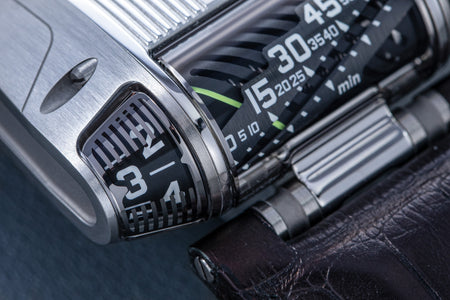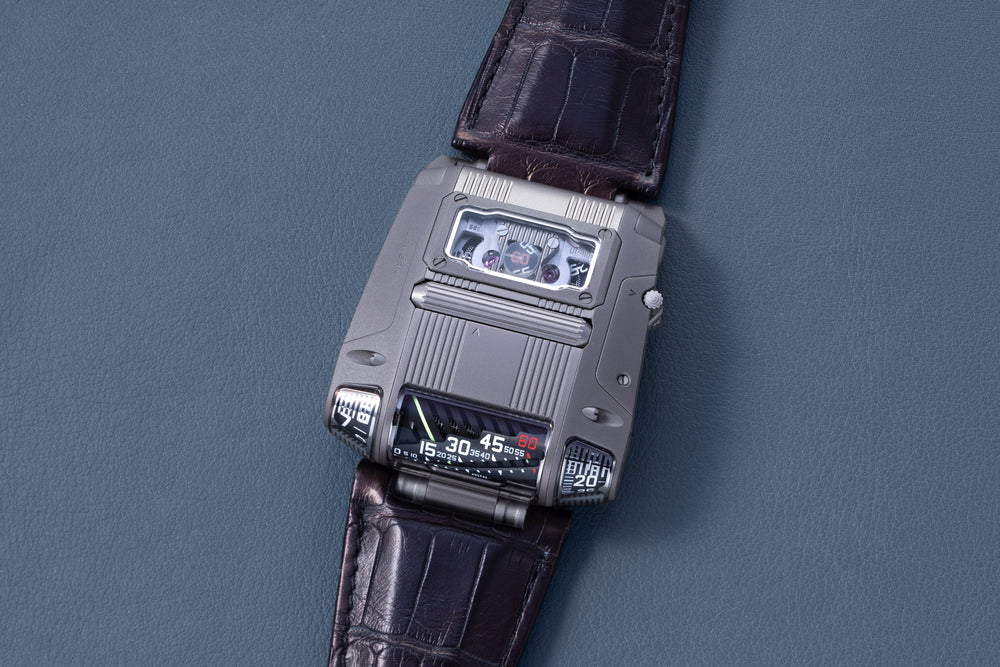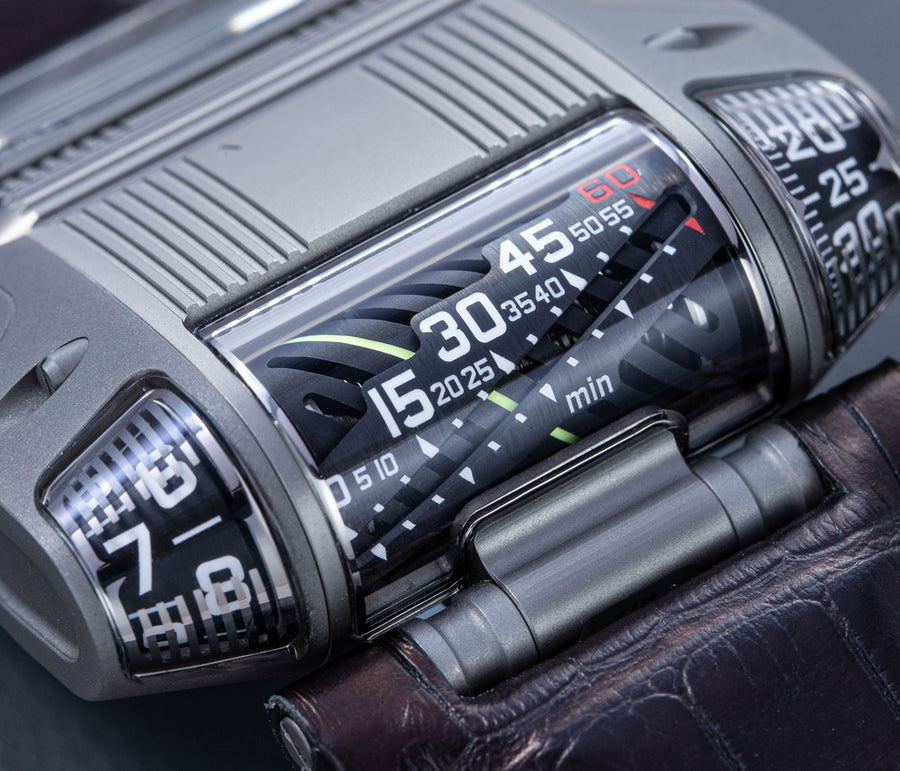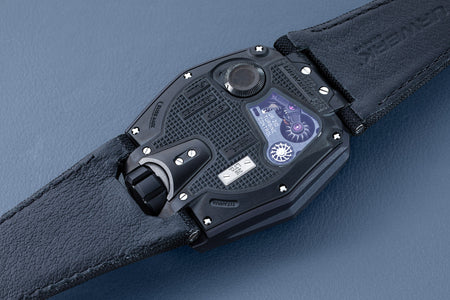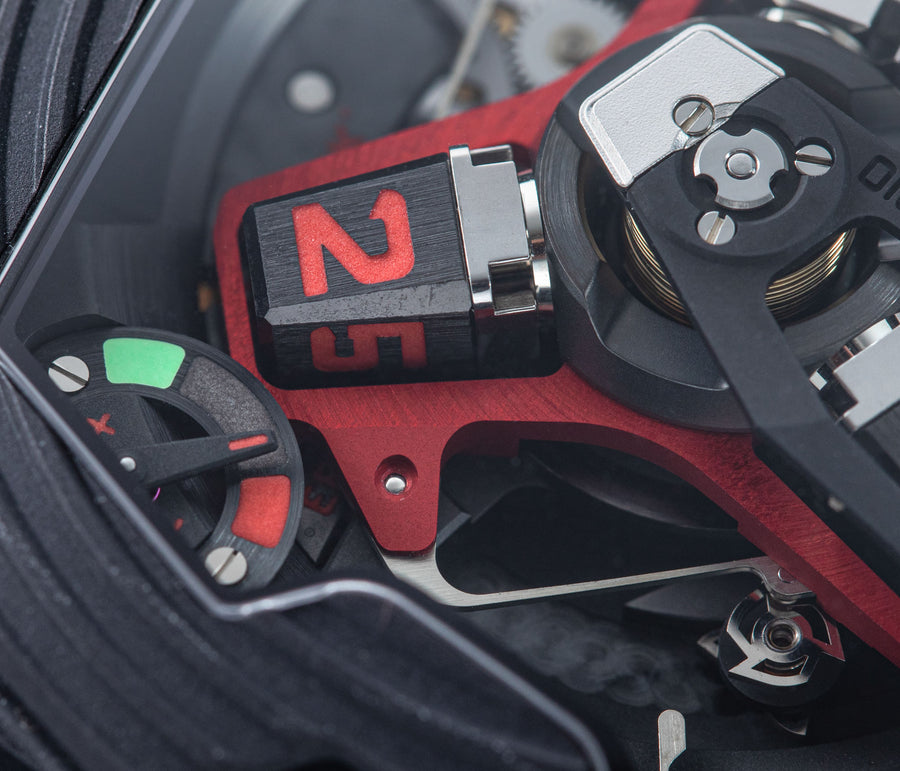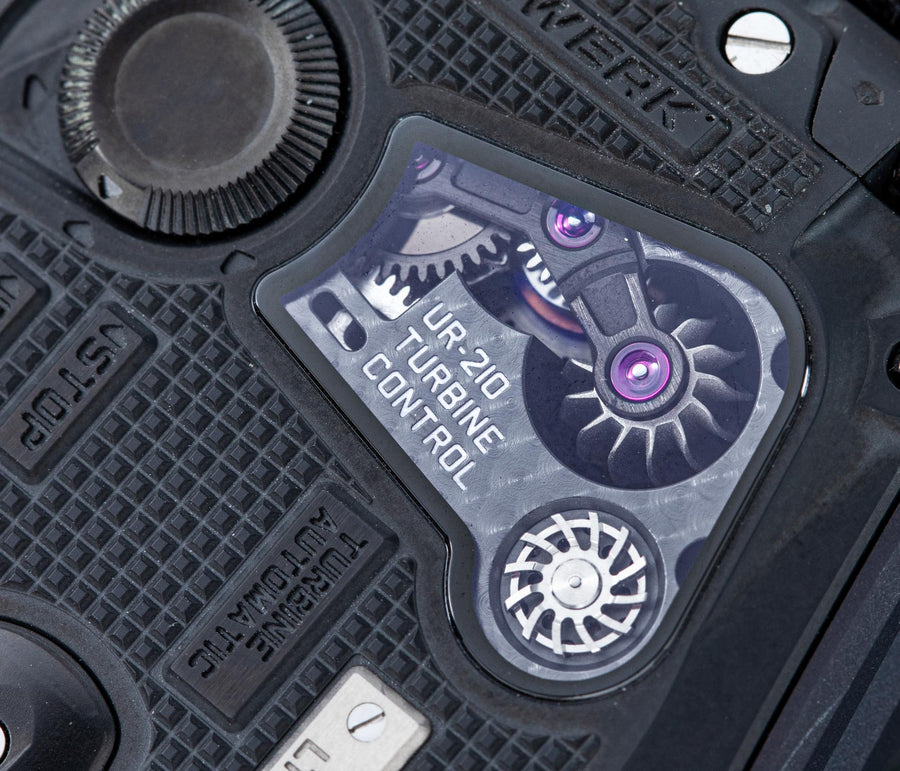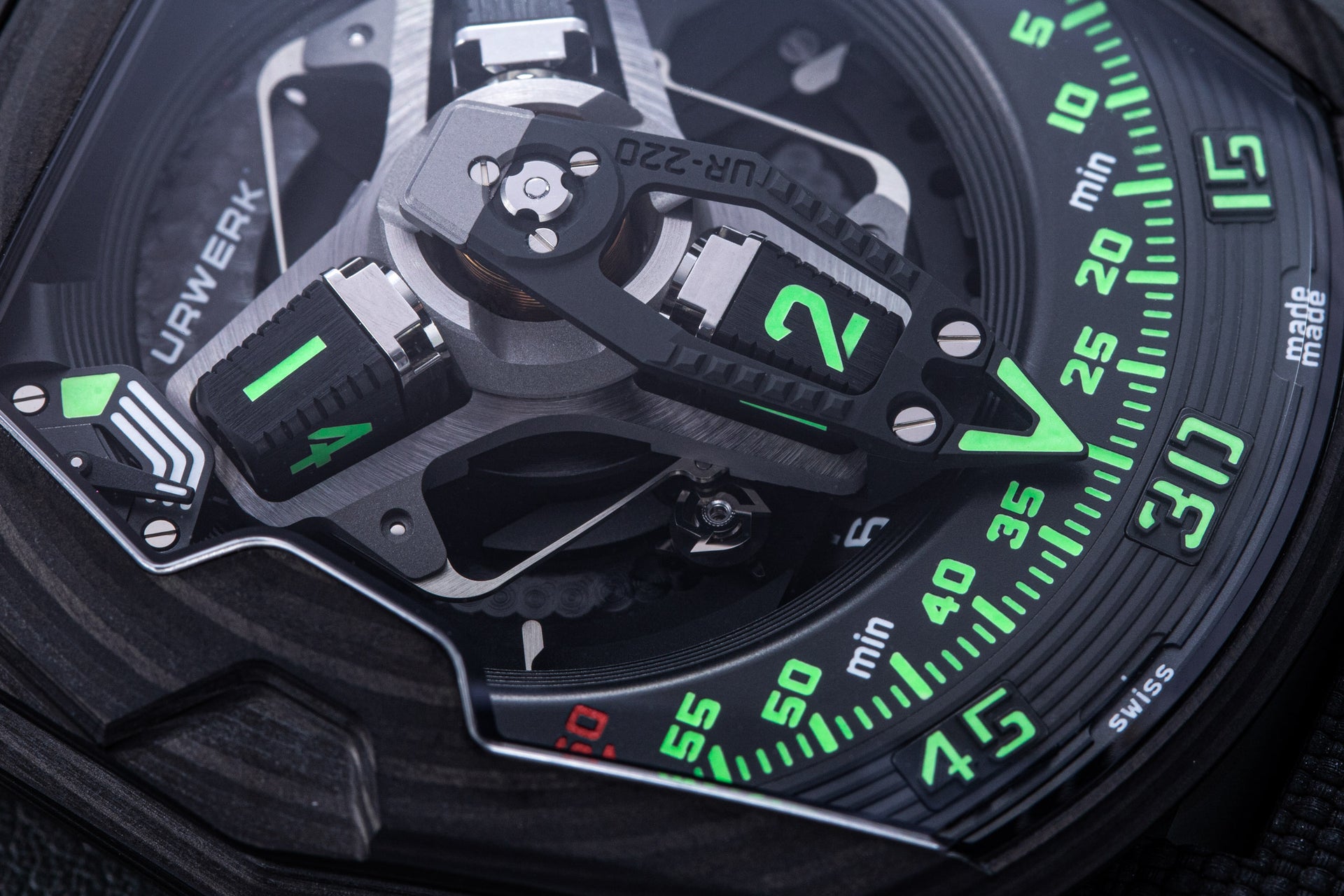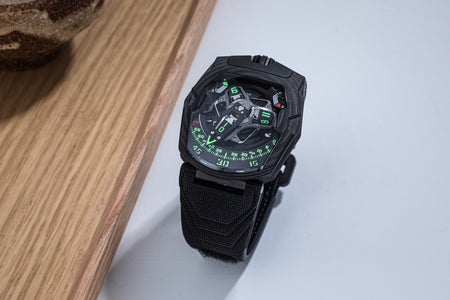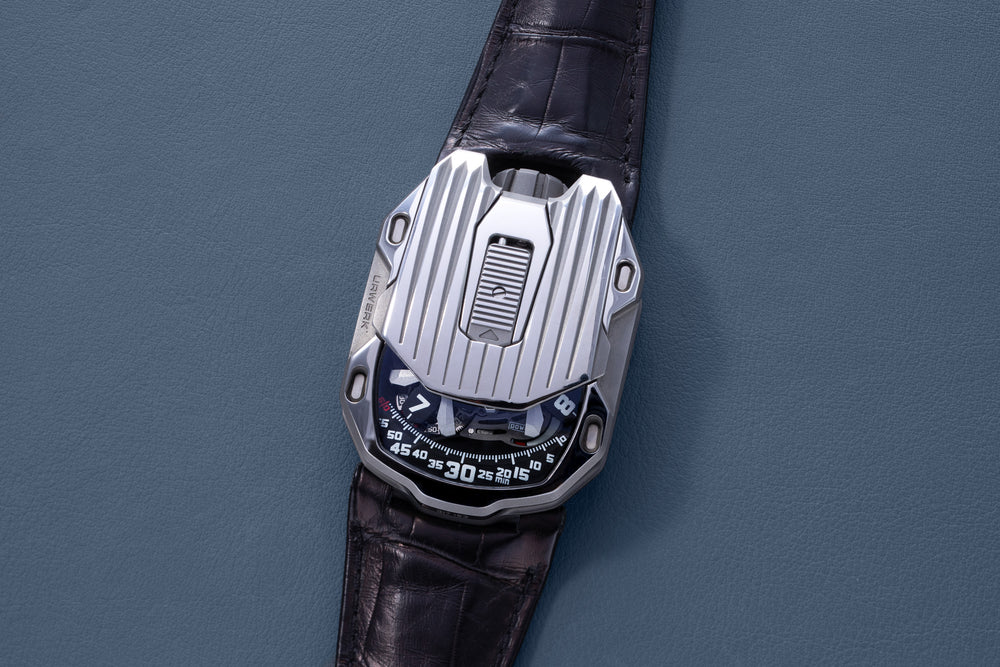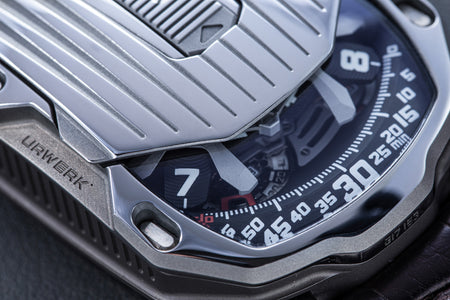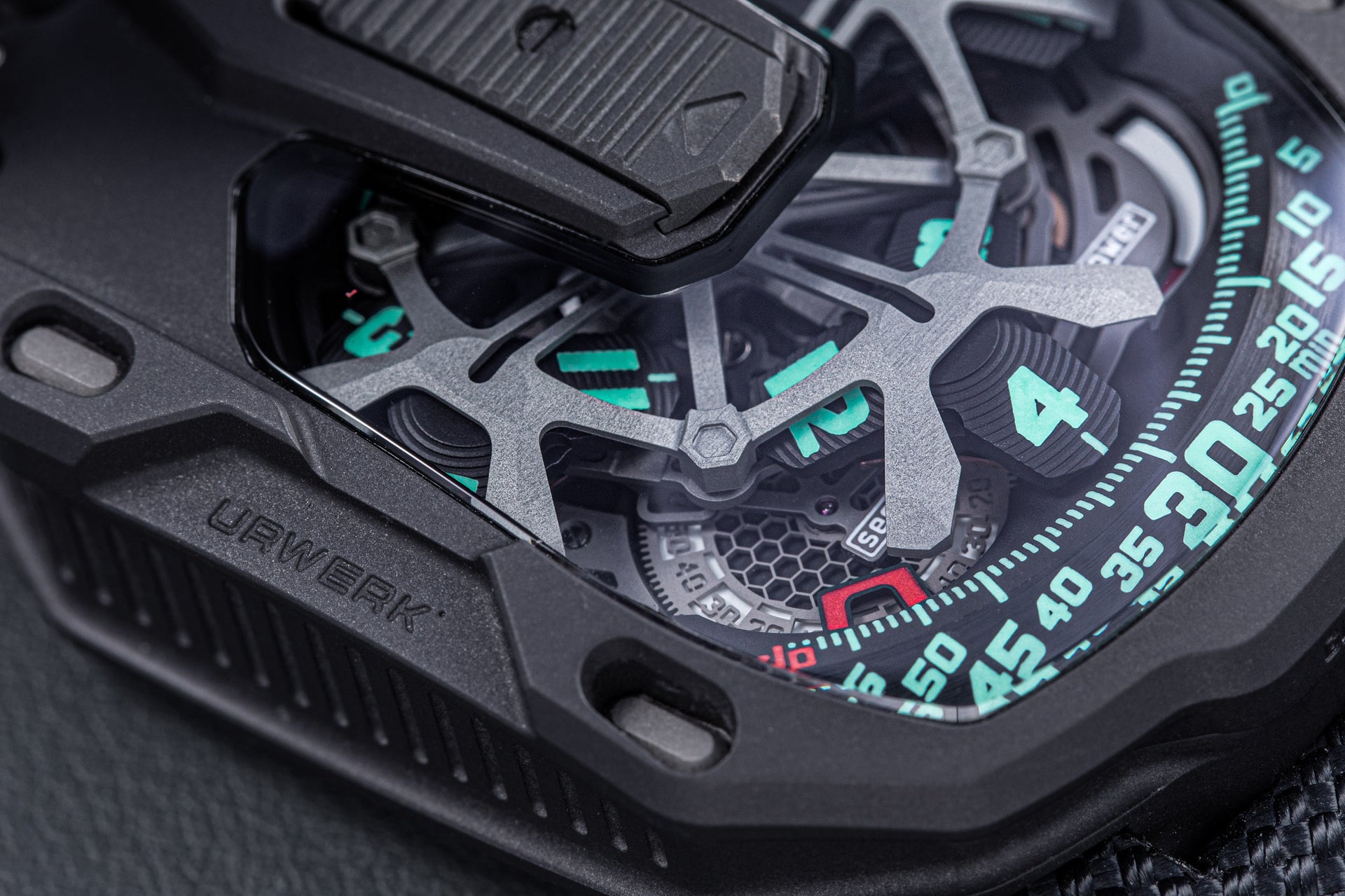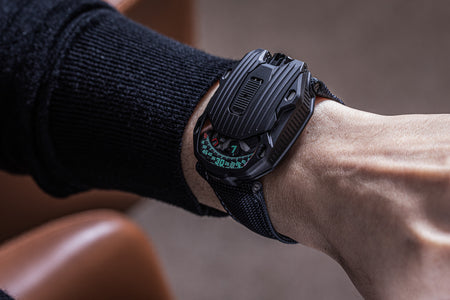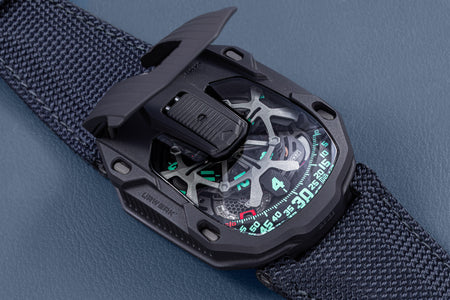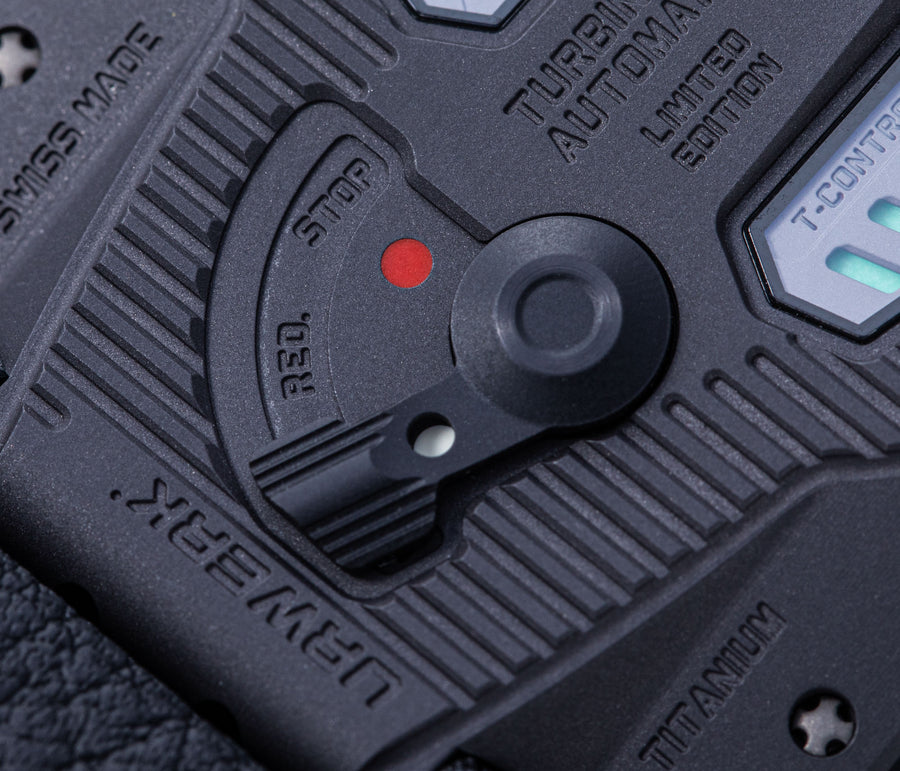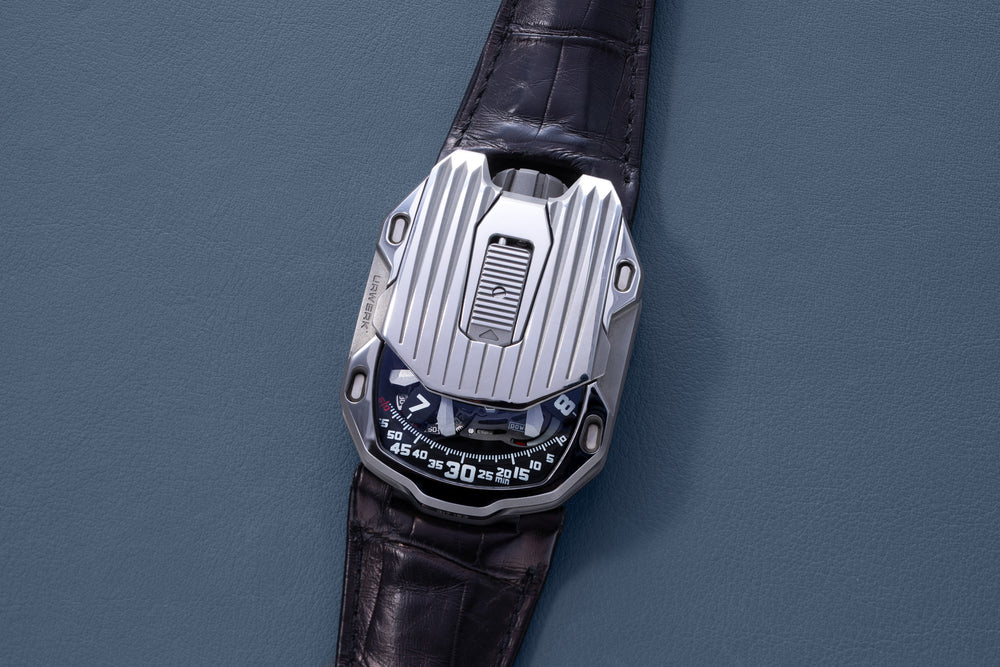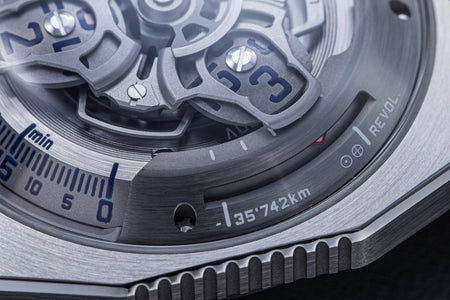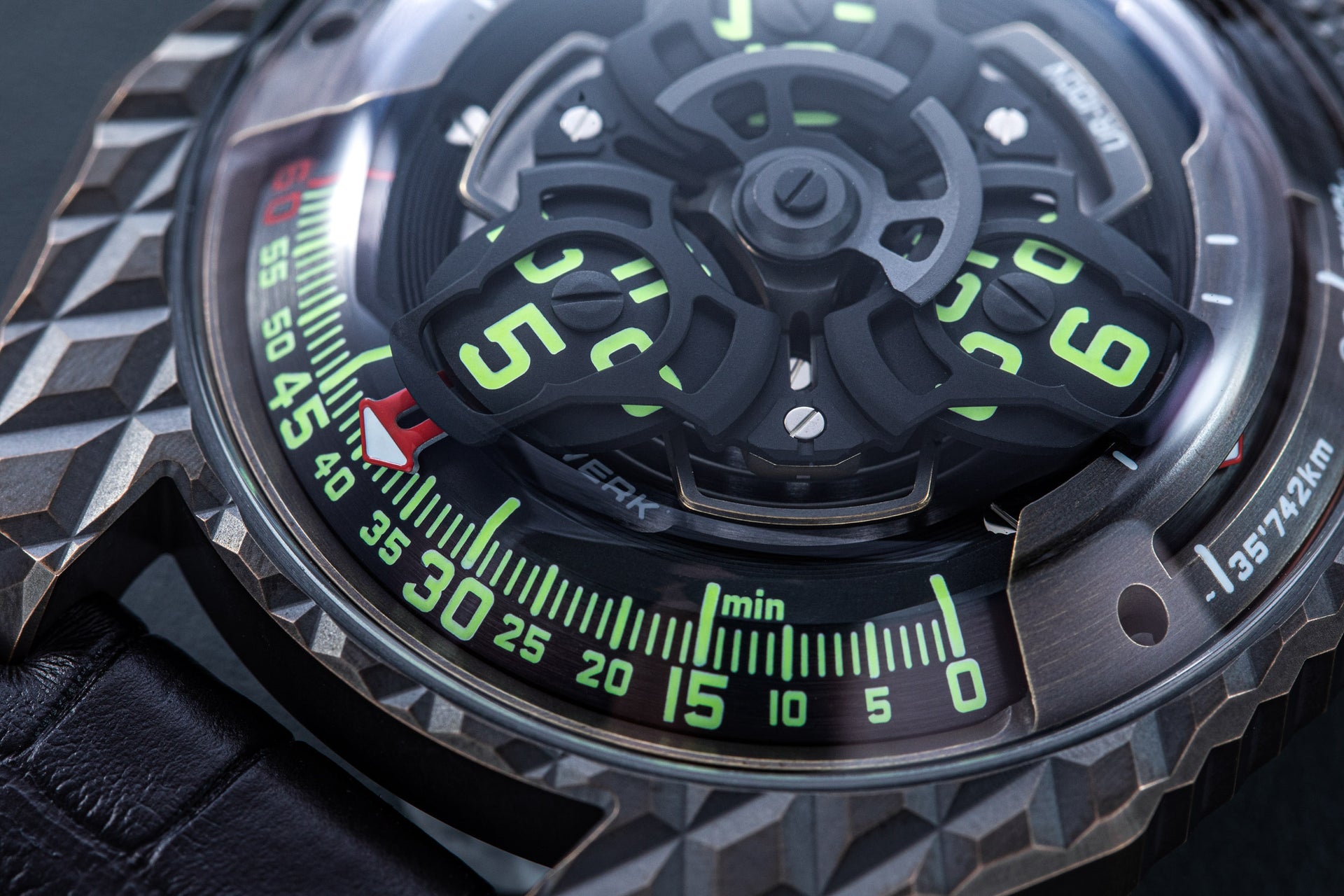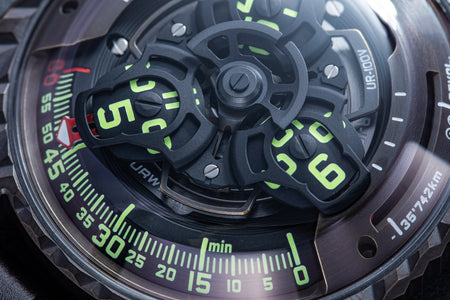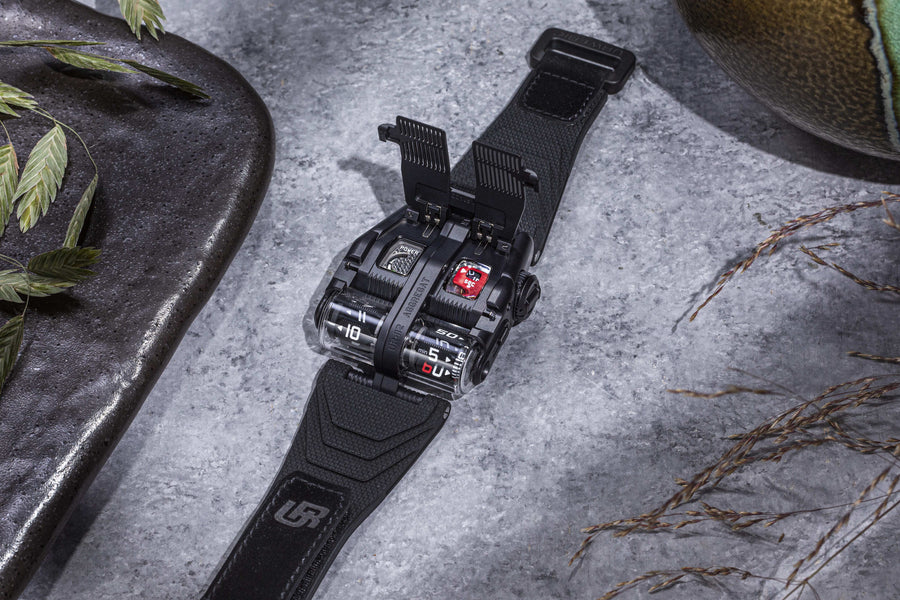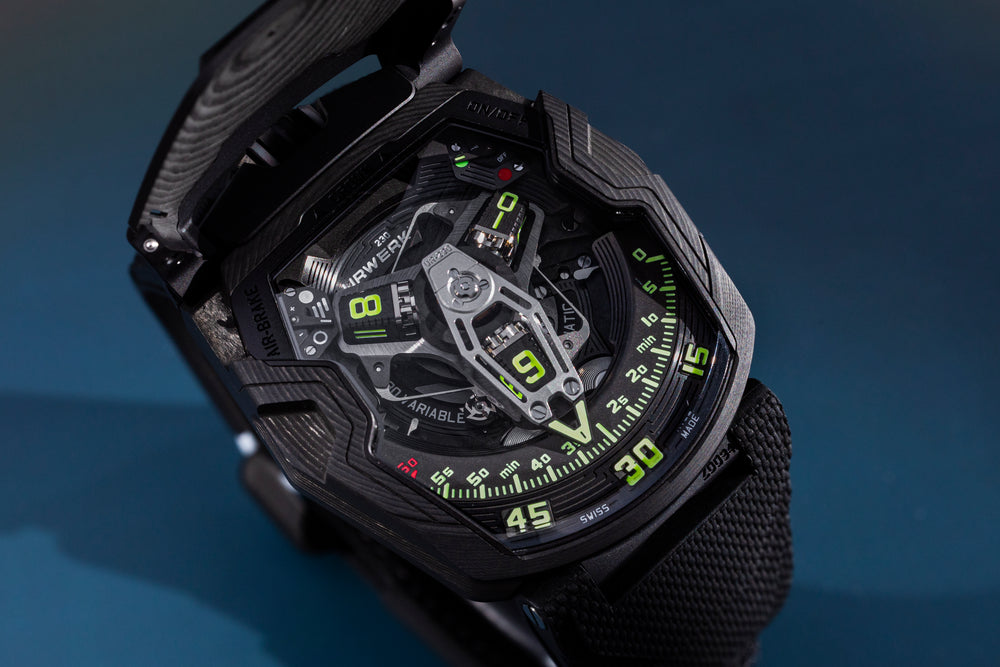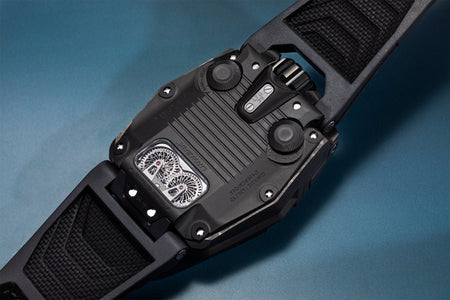"It's very important that we stay true to what we are. You just have to express yourself and somehow mirror your education, your passions and your love with what you know. You mix that together and then it comes out. It can disturb, but that's the reason. That's the reason of creation."
Avant-garde independent watchmaking – in both design and mechanics – started to take root in the village of Sainte-Croix, a village in the Swiss Jura mountains in the mid-90s. After a stint at both automaton producer Francois Junod and watchmaker Vianney Halter’s ateliers in 1994, a 19 year-old Felix Baumgartner joined his elder brother Thomas and long-time friend Martin Frei in establishing URWERK. Founded in 1997, the trio took inspiration from the past as watchmakers often do, yet they nonetheless looked squarely to the future with an aim of developing something exceptionally novel.
The result was the UR-101 and UR-102, both variations on a theme that indicated the time via a wandering hours. Made up of an hour numeral that traverses a minute scale, the display was invented in Germany in the 17th century, but URWERK installed it inside an sleek watch case both retro and futuristic, bringing to mind a 1950s vision of space travel.
Featuring a wandering hours like its earliest creations, the UR-103 went even further in design. Fabricated by Christian Gros, a case maker instrumental to URWERK's rise and whom they had initially shared a workshop with in Geneva, the UR-103 case resembled an Art Deco spacecraft and featured a “control panel” on its reverse that contained the power reserve indicator and constant seconds.
2003
Baumgartner & Frei
UR-103
Though the third wristwatch model produced by URWERK, the UR-103 is the brand’s foundational timepiece, establishing both its unconventional approach to indicating the time as well as its avant-garde case styles. Large but sleek, the UR-103
The wandering hours display of the UR-103 is centuries old, while the movement within was based on the commonplace Peseux 7001. Yet the UR-103 was imaginative, managing to both reimagine the wandering hours by giving it a distinctly space-age aesthetic, while also being the debut for the “control panel”, a series of indicators on the case back showing the movement’s function.
But it was in 2005 that URWERK debuted the truly novel satellite-cube display with the Opus V, built for American jeweller Harry Winston. The satellite-cube display was evolved from the wandering hours, but unlike the 17th century complication that functioned only a single plane, the satellite-cube display indicated the time on two dimensions via a trio of rotating cubes.
2005
Baumgartner & Frei
Harry Winston Opus 5
Despite being the landmark Urwerk complication, the satellite-cube time display didn’t make its debut on an Urwerk wristwatch. Instead, it was first shown to the world in the Harry Winston Opus V. The fifth watch in the jeweller’s collaborative series with independent watchmakers, the Opus V was equipped with the same satellite-cube time display found in later Urwerk watches, but also featured a retrograde minutes that would remain unique. Also unusual was the hidden crown that sits under a swivelling lid on the right of the case, a conventional position that contrasts with the typical 12 o’clock location of Urwerk crowns.
2007
Baumgartner & Frei
UR-201 Black Platinum
Two years after the Opus V, URWERK unveiled its own satellite-cube display wristwatch, the UR-201. With the retrograde minutes of the Opus V replaced with a telescopic pointer, the UR-201 was not only a novel combination of complications, but also a new expression of the brand’s house style. Made of platinum coated a discreet black for the launch edition, the case was topped by a panoramic sapphire crystal, while having inclined flanks to accommodate the minute scale, giving it a distinctive, vertically-asymmetric appearance. Issues with the hand-wind Jaquet base movement led to the swift replacement of the UR-201 a year later with the UR-202, which was similar but powered by an automatic Girard-Perregaux calibre.
2011
Baumgartner & Frei
UR-1001 Zeit Device
The first and only pocket watch ever produced by URWERK, the UR-1001 is the brand’s ultimate timekeeper, a monumental, double-faced pocket watch that incorporates almost everything URWERK has invented. The UR-1001 has the brand’s signature satellite-cube display twice over: for the hours and minutes, as well as the months and date of the annual calendar. And like many of the brand’s wristwatches, the UR-1001 has a “control panel” on the reverse. It includes a conventional service-interval indicator, but also a running-time display that carries on for up to 1,000 years.
2013
URWERK x MB&F
Nitro C3H5N3O9
An intriguing tie up between MB&F and URWERK, C3H5N3O9 was a short-lived collaboration that resulted in just one watch, the Experiment ZR012 Black. Named after the chemical formula for nitroglycerin – the key ingredient in explosives - C3H5N3O9 was founded in 2012 and rolled out the ZR012 in two variants before being quietly shelved. Designed by MB&F with a movement produced by URWERK, the ZR012 is equipped with a time display inspired by the eccentric rotary construction of a Wankel engine. Hours and minutes are indicated a pair of Rouleaux triangles that traverse twin semi-circular scales.
Over the following decade, the brand would go on debut other intriguing watches with unusual time displays, including the UR-CC1 that told the time on twin linear indicators, as well as the EMC, a mechanical movement with an integrated electronic timekeeping-monitoring device.
2016
Baumgartner & Frei
EMC X-Ray Time Hunter
An expression of URWERK’s vision of watchmaking’s future, the EMC is a fusion of traditional mechanical watchmaking with electronics that allow the wearer to measure and then adjust the timekeeping of the watch.
The hand-wound movement within the EMC is fitted with an electronic optical sensor that reads the motion of the balance wheel and then compares the reading with a quartz integrated circuit that provides the reference time. The comparison results in a display of the movement’s rate variation, which can be adjusted away via a “fine tuning” screw on the case back. But despite being electronic, the optical measurement system is entirely self-contained, relying on a swivelling lever on the watch case that charges a generator, which then powers the system.
2019
Baumgartner & Frei
UR-111C PIECE UNIQUE ENGRAVED
The King Cobra replicated the twin linear display in distinctly URWERK style, but as a limited run of 50 pieces, it would recede into history until the UR-111C. Featuring a linear display in an inclined window for the minutes, the UR-111C also indicated hours and minutes on twin rotating cones. And most novel of all is an elongated roller on the front of the watch for winding and setting, which replaces the conventional crown.
2018
Baumgartner & Frei
UR-111C IRON
The origins of the UR-111C lie in the late 1950s with an experimental Patek Philippe watch nicknamed the Cobra that featured an intriguing, linear time display within two narrow windows.
2018
Baumgartner & Frei
UR-111C GUN METAL
Designed by jeweller Gilbert Albert and built by Louis Cottier – the engineer famous for inventing the world-time mechanism named after him – the one-off watch now in the Patek Philippe Museum provided inspiration for the UR-CC1 King Cobra of 2009.
2018
Baumgartner & Frei
UR-210 Platinum ROYAL HAWK
URWERK launched the second generation of the satellite-cube display in 2012. Although the UR-210 featured the same hour display on a trio of rotating cubes, it was a whole new watch, stylistically and mechanically. The concise lines of the UR-202 had been transformed into something more aggressive, with the case having a sharply angled bezel and notched flanks. And the time display now incorporated a retrograde minutes, harking back to the Opus V of 2005.
2020
Baumgartner & Frei
UR-220 All Black
Eight years later, the UR-210 evolved into the UR-220. Though similar in many ways to its predecessor, the UR-220 is a different watch.
2020
Baumgartner & Frei
UR-220 Carbon
The UR-220 retains the same time display mechanism and also same frontal footprint, but manages to be substantially thinner due to the hand-wind movement within. Combined with the use of carbon composite for the case – URWERK’s first use of the material – the UR-220 is lightweight watch that is the tangible opposite of its ancestor, the platinum UR-201.
2017
Baumgartner & Frei
UR-105CT IRON
Conceived to replace the UR-103, the UR-105 is very much like its predecessor, showing the time via a wandering hours. But it has been heavily upgraded in a multiple ways, ranging from the Zenith Elite as the movement base, to the honeycomb-open worked seconds disc visible in front.
2018
Baumgartner & Frei
UR-105CT KRYPTONITE
As to the Elite is an automatic movement, the UR-105 also gets the brand’s trademark “turbine” winding mechanism that can be adjusted to optimise the winding efficiency relative to the wearer’s physical activity, accessible via the winding-rate control lever on the back of the watch.
2019
Baumgartner & Frei
UR-105 The Hour Glass EDITION
Unveiled in celebration of The Hour Glass' 40th Anniversary, the UR-105 Commemorative Edition features a distinct sandblasted bronze case. Over time the case will develop a unique patina; a reminder of the passage of time and the beauty of imperfection.
2020
Baumgartner & Frei
UR-100V IRON SPACETIME
Though it predates the UR-103 and UR-105 numerically, the UR-100 is the latest URWERK wristwatch. Essentially a streamlined version of the UR-105, the UR-100 still tells the time via wandering hours on satellite discs, but the movement is contained with a manageably slim case. And although it retains an unusual case shape, the UR-100 is constructed in a conventional manner – a gold case middle with sapphire crystals on the front and back – making it tangibly different from earlier URWERK watches.
2021
Baumgartner & Frei
UR-100V T-Rex
Aptly named the 'T-REX', Urwerk's 6th variation of the extremely wearable UR-100V features a pronounced hobnail-milled case with a heavy, rich patina.
Once the case is first mechanically engraved, it's blasted with tiny ceramic beads to create a matte finish. The resulting case is then chemically treated and bead-blasted again to create the distinct patina.
2022
Baumgartner & Frei
UR-120 “SPOCK”
A watch worthy of the Vulcan salute. After over two decades of popularising revolving satellite displays, Urwerk flexes its ability to innovate continuously. The Urwerk UR120 is affectionately named “Spock” in honour of the Vulcan-saluting member of the USS Enterprise. Unlike other Urwerk satellite systems, the Urwerk UR120 features satellites that split into a V-shaped open hand, rotate and then converge to display the hours. Live long and prosper.
2023
Baumgartner & Frei
UR-112 BACK TO BLACK
Urwerk founders Baumgartner and Frei nicknamed the UR 112 “Aggregat” because it brings together different elements powered by a single energy source. Triangular prisms operating under transparent cylinders display hours and minutes. On the left, the digital hour display – all 12 numerals are engraved and filled with Super-LumiNova. The same system displays the minutes on the right as they jump by in 5-minute increments. In an avant-garde nod to the hinged pocket watches of yesteryear, a hunter case with a titanium protective cover houses the UR-112 movement.
2023
UR-230 "Eagle"
Part of the UWERK UR-200 family, the UR-230 “Eagle” is ready to soar above its predecessors as it brings a host of new functions and features to the wrist. This includes a worlds-first set of shock absorbers that were designed to protect the new UR-7.30 calibre via two sets of turbines. The first reduces the impact of external shocks while the second controls the airflow that feeds the winding system. Switch to its manual winding mode located on the back of the watch to disengage the rotor entirely. The watch is further protected by the TP carbon case and mobile cover in black DLC titanium for an even greater look and feel. This can also be lifted 90 degrees to reveal the entire satellite system.
Learn More
DISCOVER MORE
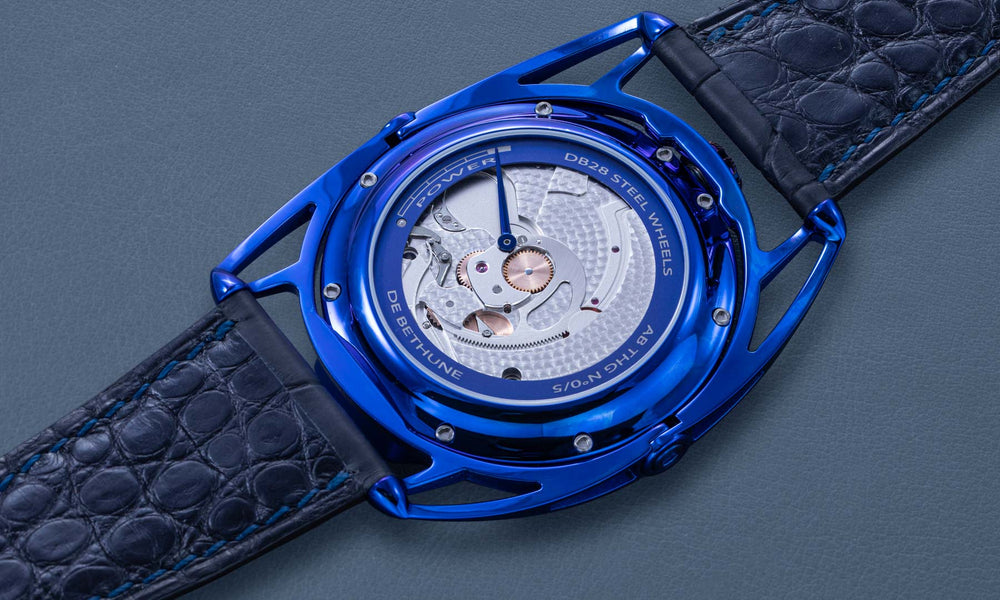
The Technical Genius
Denis Flageollet
Enter Room
The Dreamer
Maximilian Büsser
Enter Room






